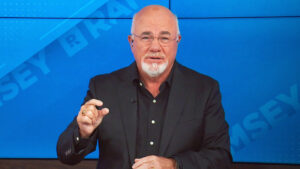News about jobs this week reignited investors’ concerns about a slowing labor market.
The latest employment snapshot from the Bureau of Labor Statistics, released Friday, painted an ugly picture of the current state of the economy. The number of jobs added in August came in more than 70% below economists’ expectations, and the unemployment rate hit its highest level since 2021.
On Thursday, new data releases showed that first-time claims for unemployment benefits rose to an 11-week high, with layoff announcements at their worst levels since the pandemic and, before that, the Great Recession; that private-sector businesses sharply reined in their hiring last month; and that last month was the worst August for layoff announcements since the pandemic and, before that, the Great Recession.
In addition, the August jobs report included a downward revision to June’s jobs numbers, showing that the U.S. economy lost 13,000 jobs that month. This was the first negative employment month since December 2020, ending the second-longest period of employment expansion on record.
Related: Hiring data reveal disturbing job market trend
Those numbers will raise questions about the quality of the data from President Trump and others.
E.J. Antoni, the President’s pick to lead the Bureau of Labor Statistics after he fired BLS chief Erika McEntarfer in the wake of the July report, said in August that he considered suspending the monthly jobs report; he has said he favors quarterly reports, though he reportedly has backed away – at least for now – from the idea of altering the data flow.
But the data also raises questions among market watchers and observers about how the economy’s tune is changing.
One veteran Wall Street observer says the deteriorating labor reports are all that stands between the stock market and a decline of epic proportions.
Veteran analyst says market in ’17-year super-cycle’
Jim Welsh is an independent analyst with 40 years of portfolio management experience who writes the Macro Tides and Weekly Technical Review newsletters. He mixes macroeconomics with technical analysis and has a history of on-point calls, warning in 2007, for example, of the coming sell-off that came with the Great Recession of 2008.
Bloomberg/Getty Images
While that specific call is now 17 years old, it is particularly relevant today because Welsh says that the economy is currently following a 17-year “super cycle” that has it headed for major trouble in the next two years.
Welsh has seen this situation building—as one would expect with a 17-year cycle—but says that the evolution of artificial intelligence has helped to keep trouble at bay.
He even thinks that Standard & Poor’s 500 has room to run before it peaks; he said in an interview on “Money Life with Chuck Jaffe” that he expects a short-term pullback in the 3% to 7% range based on technical factors, with the S&P then rebounding to new highs of 6,600 to 6,800.
After that, he said, the labor market holds the key.
“I think the key here is looking at corporate layoffs,” said Welsh, formerly chief tactical strategist at the Forward Funds, in an interview taped before the Thursday and Friday job numbers updates were released.
“Chair [Jerome] Powell in his Jackson Hole speech talked about how we’re seeing a decline both in terms of the demand for workers — which is why job growth has slowed – and … in the supply [of workers] as immigrants are removed from the labor force and so forth. But what we aren’t seeing yet, is companies aggressively starting to lay off people.
“That, to me, will be the signal to watch that the economy has shifted from slowing and now it’s going to slow at a more rapid pace,” Welsh added.
The jobs number that will signal big problems
Specifically, he said that if weekly claims rise above 275,000, he’s expecting trouble; the most recent weekly number for initial unemployment claims was 237,000.
“We’ve been in this balanced position, not seeing enough job growth but not seeing layoffs, and that’s why I think most consumer spending is holding up,” Welsh explained in an interview that aired on the Sept. 5 edition of Money Life.
Related: Bank of America announces huge shift in Fed rate cut forecast
“Once you see job growth turn negative and layoffs increase, then you’re going to see a more pronounced slowdown. Even those who still have a job, you start to see unemployment claims go up and the unemployment rate go up and people just pull in their horns. It’s an intelligent response to uncertainty.”
Welsh had been sounding the alarm on the economy rolling over and taking the market with it back in February, when he told his subscribers that the advance/decline line for the New York Stock Exchange wasn’t making new highs in concert with the S&P 500.
That has since changed, with the advance/decline line now making new highs in sync with the market at the end of August. That suggests the market has room to run and that any decline will be muted for now.
“If we get to 6,600, 6,700, 6,800 and everything is copacetic, that just tells me we’re going higher still,” Welsh said. Still, he added that he thinks the market is coming to an inflection point and “the next time we see a meaningful divergence between the S &P making higher highs and the advance/decline line failing to do so, I’m going to take that as a serious warning that another decline of 10% to 15% — like we saw in March and April, is headed our way.”
A major reckoning could be on the horizon
But Welsh thinks that decline will just be the start of trouble and a long-term secular bear market that’s part of the 17-year cycle extending back to 1939.
That cycle set up trouble easily found when looking at charts and seeing what happened in 1956, 1973, 1990, and 2007.
More Wall Street Analysts:
- Analysts turn heads with Nvidia rival’s stock target after earnings
- Rare signal to send stock market surging next year, says veteran analyst
- Analysts unveil surprising Dell stock target after slump
While that pace should have put the market in trouble in 2024, Welsh notes that the cycle is less tied to the calendar and more tied to when the prior cycle starts and finishes; the 2007 downturn lasted into 2009, which means the 17-year itch could be scratched in the next 18 months.
“My take here is we’re coming to an inflection point where I believe valuations — household investment levels in the stock market — are the highest ever,” said Welsh, “and if we get to a point where the economy starts to meaningfully slow down, that is going to be the trigger for a much deeper and more prolonged decline.”
If true, investor pain could be massive
He said the 17-year cycle is more “instructive” than a specific roadmap, adding that spending on artificial intelligence has been a huge economic shot in the arm that has delayed a broader slowdown.
When that spending slows, you’re in trouble, like the Internet bubble bursting when semiconductor spending started to wane.
Welsh has written that the S&P 500 “can be expected to drop to significant lows of the prior bull market” in these 17-year cycles.
That translates to a first target of 3,500 on the S&P 500, the October 2022 low. Longer term, he said the target is 2,200 – the low from March 2020 at the peak of the pandemic troubles – or 1,600, the level that was the high for the index in both 2000 2007.
Welsh says he’s not the only one worried, even if his forecasts are more extreme than most.
“Warren Buffett has $347 billion in cash, it’s 30 % of his portfolio,” Welsh said. “In 2000, it was 25%. So, in other words, he’s holding more cash today because of what he sees from an evaluation standpoint.”
“You know, the US government has a problem with spending. You know, the deficit is over 6%. That can’t continue with $37 trillion outstanding in interest rates, causing interest payments to be $1.2 trillion. These issues are going to come to a head. … We’re not going to be able to cut back on debt without slowing the economy.”
Related: Analyst expects gold to fall off the ‘Wall of Worry’




